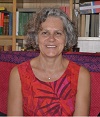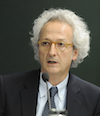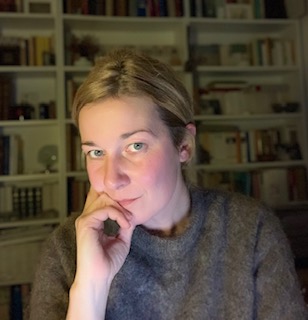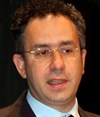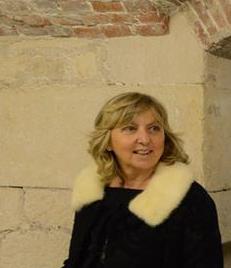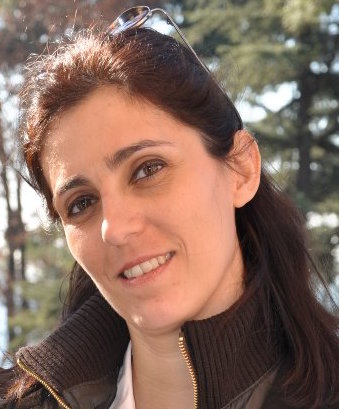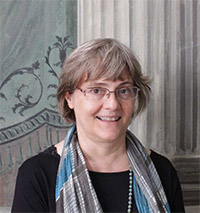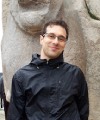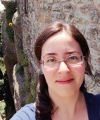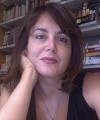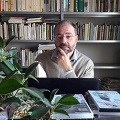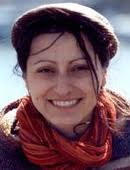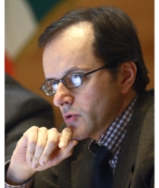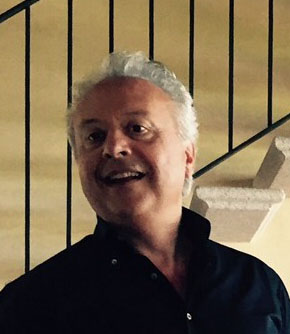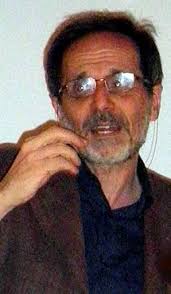Studying at the University of Verona
Here you can find information on the organisational aspects of the Programme, lecture timetables, learning activities and useful contact details for your time at the University, from enrolment to graduation.
Academic calendar
The academic calendar shows the deadlines and scheduled events that are relevant to students, teaching and technical-administrative staff of the University. Public holidays and University closures are also indicated. The academic year normally begins on 1 October each year and ends on 30 September of the following year.
Course calendar
The Academic Calendar sets out the degree programme lecture and exam timetables, as well as the relevant university closure dates..
| Period | From | To |
|---|---|---|
| First half of Semester 1 | Sep 25, 2017 | Nov 11, 2017 |
| Second half of Semester 1 | Nov 13, 2017 | Jan 20, 2018 |
| First half of Semester 2 | Feb 26, 2018 | Apr 21, 2018 |
| Second half of Semester 2 | Apr 23, 2018 | Jun 9, 2018 |
| Session | From | To |
|---|---|---|
| Sessione d'esame invernale | Jan 22, 2018 | Feb 24, 2018 |
| Sessione d'esame estiva | Jun 11, 2018 | Jul 28, 2018 |
| Sessione d'esame autunnale | Aug 27, 2018 | Sep 22, 2018 |
| Session | From | To |
|---|---|---|
| Sessione estiva | Jul 16, 2018 | Jul 21, 2018 |
| Sessione autunnale | Nov 12, 2018 | Nov 17, 2018 |
| Sessione invernale | Apr 1, 2019 | Apr 6, 2019 |
| Period | From | To |
|---|---|---|
| All Saints Day | Nov 1, 2017 | Nov 1, 2017 |
| Immaculate Conception | Dec 8, 2017 | Dec 8, 2017 |
| Christmas break | Dec 22, 2017 | Jan 7, 2018 |
| Easter break | Mar 30, 2018 | Apr 3, 2018 |
| Liberation Day | Apr 25, 2018 | Apr 25, 2018 |
| Labour Day | May 1, 2018 | May 1, 2018 |
| Patron Saint Day | May 21, 2018 | May 21, 2018 |
| Republic Day | Jun 2, 2018 | Jun 2, 2018 |
| Summer break | Aug 13, 2018 | Aug 18, 2018 |
Exam calendar
Exam dates and rounds are managed by the relevant Culture and Civilisation Teaching and Student Services Unit.
To view all the exam sessions available, please use the Exam dashboard on ESSE3.
If you forgot your login details or have problems logging in, please contact the relevant IT HelpDesk, or check the login details recovery web page.
Should you have any doubts or questions, please check the Enrollment FAQs
Academic staff
 augusto.barbi@univr.it
augusto.barbi@univr.it

Bassetti Massimiliano
 massimiliano.bassetti@univr.it
massimiliano.bassetti@univr.it
 045802 8376
045802 8376
 evita.calabrese@univr.it
evita.calabrese@univr.it
 marco.dallavalle@univr.it
marco.dallavalle@univr.it
 fatima.elmatouni@univr.it
fatima.elmatouni@univr.it
Hatzikiriakos Alexandros Maria
 alexandrosmaria.hatzikiriakos@univr.it
alexandrosmaria.hatzikiriakos@univr.it
Kaczko Sara
 francesco.lupi@univr.it
francesco.lupi@univr.it
Maganuco Anna Maria Grazia Rita
 anna.maganuco@univr.it
anna.maganuco@univr.it
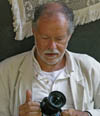
Mastrocinque Attilio
 attilio.mastrocinque@univr.it
attilio.mastrocinque@univr.it
 +39 045802 8386
+39 045802 8386
 linda.napolitano@univr.it
linda.napolitano@univr.it
 giulia.pedrucci@univr.it
giulia.pedrucci@univr.it
 dino.piovan@univr.it
dino.piovan@univr.it
 alberto.scandola@univr.it
alberto.scandola@univr.it
Tani Stefano
 stefano.tani@univr.it
stefano.tani@univr.it
 +39 045802 8110
+39 045802 8110
 sonia.trovato@univr.it
sonia.trovato@univr.it
 carlo.vannini@accademiabelleartiverona.it
carlo.vannini@accademiabelleartiverona.it
 gianmaria.varanini@univr.it
gianmaria.varanini@univr.it
Study Plan
The Study Plan includes all modules, teaching and learning activities that each student will need to undertake during their time at the University.
Please select your Study Plan based on your enrollment year.
1° Year
| Modules | Credits | TAF | SSD |
|---|
To be chosen between2° Year activated in the A.Y. 2018/2019
| Modules | Credits | TAF | SSD |
|---|
Latin literature (i)
To be chosen between2 courses to be chosen between2 courses to be chosen between3° Year activated in the A.Y. 2019/2020
| Modules | Credits | TAF | SSD |
|---|
To be chosen between3 courses to be chosen between| Modules | Credits | TAF | SSD |
|---|
To be chosen between| Modules | Credits | TAF | SSD |
|---|
Latin literature (i)
To be chosen between2 courses to be chosen between2 courses to be chosen between| Modules | Credits | TAF | SSD |
|---|
To be chosen between3 courses to be chosen between| Modules | Credits | TAF | SSD |
|---|
Legend | Type of training activity (TTA)
TAF (Type of Educational Activity) All courses and activities are classified into different types of educational activities, indicated by a letter.
Latin Paleography (i) (2019/2020)
Teaching code
4S01205
Teacher
Coordinator
Credits
6
Also offered in courses:
- Latin Paleography (i) of the course Bachelor’s degree in Cultural Heritage
Language
Italian
Scientific Disciplinary Sector (SSD)
M-STO/09 - PALEOGRAPHY
Period
Sem 2A dal Feb 17, 2020 al Mar 28, 2020.
Learning outcomes
The aim of the course is to enable the attending students to deal, date (according to place and time), read, transcribe, comprehend, and examine the main forms of manuscript artifacts written in Latin alphabet (both books, and charters, not neglecting the epigraphs) from the Antiquity, and the Late Antiquity, to the Middle Ages, and the Early Modern Era. The skills so learned, both on theoretical and practical side, will be very helpful for those students who, in completing their bachelor’s degree (both in literary and historical curriculum), are intended to be working with manuscript sources in their original form.
Program
The course will focus the history of the handwritings in Latin script between 6th century D.C. and 15th century A.D.
Knowledges in latin classics, roman history and medieval history are useful for attendance.
Reference books:
a) A. PETRUCCI, Breve storia della scrittura latina, Roma, Bagatto Libri, 1989;
b) P. CHERUBINI, La scrittura latina: storia, forme, usi, Roma, Carocci Editore, 2019 (Bussole, 589);
In any case the chosen book has to be integrated with A. PETRUCCI, Prima lezione di paleografia, Roma-Bari, Laterza, 2002 (Universale Laterza, 811)
Special schedules for not regular attenders have to be drawn with the teacher.
| Author | Title | Publishing house | Year | ISBN | Notes |
|---|---|---|---|---|---|
| Armando Petrucci | 2 Alle origini del libro moderno | Laterza | 1979 | ||
| Armando Petrucci | Breve storia della scrittura latina | Il Bagatto | 1989 | 8878060264 | |
| Paolo Cherubini | La scrittura latina: storia, forme, usi | Carocci Editore | 2019 | 9788843095148 |
Examination Methods
The final will be an oral exam in two steps. 1. Read, date and place a classical or medieval sample of script; 2. Oral test on the history of latin handwriting (400 b.C. - 1500 a.D.)
Type D and Type F activities
| years | Modules | TAF | Teacher | |
|---|---|---|---|---|
| 1° | Aesthetics (p) | D |
Markus Georg Ophaelders
(Coordinator)
|
|
| 1° 2° 3° | The origins of Christianity | F |
Augusto Barbi
(Coordinator)
|
|
| years | Modules | TAF | Teacher |
|---|---|---|---|
| 1° 2° 3° | Archaeology and History of Greek and Roman Art (i) | D |
Giuliana Maria Facchini
|
| 1° 2° 3° | Archeology laboratory of instrumentum domesticum | F |
Giuliana Maria Facchini
(Coordinator)
|
| 1° 2° 3° | Laboratory of ancient greek | F |
Dino Piovan
(Coordinator)
|
| 1° 2° 3° | History of Greek and Roman theatre (i) | D |
Gherardo Ugolini
(Coordinator)
|
| years | Modules | TAF | Teacher | |
|---|---|---|---|---|
| 1° | Aesthetics (p) | D |
Markus Georg Ophaelders
(Coordinator)
|
|
| 3° | Roman History (p) | D |
Attilio Mastrocinque
|
|
| years | Modules | TAF | Teacher | |
|---|---|---|---|---|
| 2° 3° | Greek Literature (p) | D |
Guido Avezzu'
|
|
| 2° 3° | History of the Ancient Near East (i) | D |
Simonetta Ponchia
|
|
| 1° 2° 3° | Archaeology and History of Greek and Roman Art (p) | D |
Giuliana Maria Facchini
|
|
| 1° 2° 3° | Ephigraphy of production and distribution | F |
Alfredo Buonopane
(Coordinator)
|
|
| 1° 2° 3° | Europa: eredità-identità-prospettive | F |
Gian Paolo Romagnani
(Coordinator)
|
|
| 1° 2° 3° | Archeology laboratory of instrumentum domesticum | F |
Giuliana Maria Facchini
(Coordinator)
|
|
| 1° 2° 3° | Laboratory of theatrical and musical criticism | F |
Simona Brunetti
(Coordinator)
|
|
| 1° 2° 3° | Laboratory of ancient greek | F |
Dino Piovan
(Coordinator)
|
|
| 1° 2° 3° | CRES Lectures | F |
Corrado Viola
(Coordinator)
|
|
| 1° 2° 3° | The History of Contemporary Art (p) | D |
Roberto Pasini
|
|
Career prospects
Module/Programme news
News for students
There you will find information, resources and services useful during your time at the University (Student’s exam record, your study plan on ESSE3, Distance Learning courses, university email account, office forms, administrative procedures, etc.). You can log into MyUnivr with your GIA login details: only in this way will you be able to receive notification of all the notices from your teachers and your secretariat via email and soon also via the Univr app.
Graduation
List of theses and work experience proposals
| theses proposals | Research area |
|---|---|
| tesi di Glottologia, Storia comparata, Linguistica storica | ENGLISH LANGUAGE - Grammar and Syntax – Grammatik und Syntax |
| tesi di Glottologia, Storia comparata, Linguistica storica | GERMANIC LANGUAGE - Dialectology - Dialektologie |
| tesi di Glottologia, Storia comparata, Linguistica storica | HUMANITIES & SOCIAL STUDIES - HUMANITIES & SOCIAL STUDIES |
| tesi di Glottologia, Storia comparata, Linguistica storica | Indo-European languages & literatures - Indo-European languages & literatures |
| tesi di Glottologia, Storia comparata, Linguistica storica | LINGUISTICS - LINGUISTICS |
| Stage | Research area |
|---|---|
| Lavorare in archivio | Various topics |
| L'iter del libro in biblioteca | Various topics |
Gestione carriere
Linguistic training CLA
Student mentoring
Requisiti classi di abilitazione insegnamento
Requisiti necessari per accedere alle classi di abilitazione per l'insegnamento.
vedi allegato pdf
Inoltre, per informazioni sui 24 CFU nelle discipline antropo-psico-pedagogiche e nelle metodologie e tecnologie didattiche, si veda -> LINK
Documents
| Title | Info File |
|---|---|
|
|
pdf, it, 307 KB, 30/11/21 |




